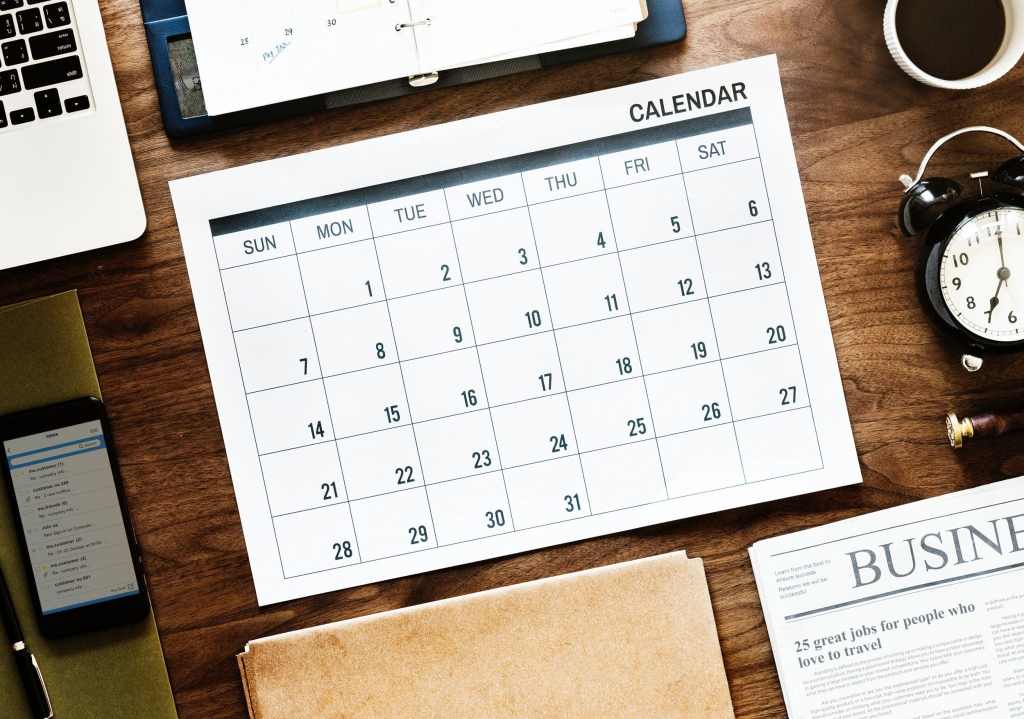How to Measure Your Goals as a Writer and Business Professional

If reaching your business and writing goals is a journey, setting them is only the first step. To continue along the path and ultimately reach your destination, you must measure your progress along the way. But how?
Consider for a moment how you might track your advancement along a physical route. You may look for landmarks, count your miles, or keep track of the hours spent on the road.
Though same principles apply to your objectives, you need to choose a method that fits well with your aim. For example, let’s say your goal is to attend a writer’s conference each year.
Take Small Steps

Any goal that involves a process, such as attending a conference, can be measured by steps. First, compose a sequential list of the actions that make up your goal—and break up large tasks into smaller lists if necessary. Consult the master list regularly to monitor your progress. (You might explore some supportive apps, such as Clear Todos, if you want to view your list on your smartphone.) Let’s look at our example:
- Find several conferences that cover my topic of interest.
- Research the full cost of each conference, including travel, hotels, and registration fees.
- Eliminate the conferences that conflict with my schedule or fall outside of my budget.
- Select one conference to attend and download the registration forms.
- Create a budget for the trip. Plan how much to save in the time leading up to the event, if necessary.
- Submit a time-off request to my manager.
- Register for the conference.
- Arrange for transportation and lodging.
- Create a packing list.
- Pack for the conference, and double check.
- Create a schedule of my preferred panels.
- Attend the conference.
After the conference, review the above checklist and make any necessary adjustments based on your experience. You can file your list for next year and use it when you need to plan again.
Budget Your Time

Time measurement is the best type of quantification for long-term goals, especially those centered on improvement. For instance, a writer with the intention of writing more regularly may measure his goal of writing more often by setting a timer for 30 minutes each morning. The goal is complete each day when the timer sounds, and when you’ve completed your hourly goal for the week.
Do it Again
Another way to measure an improvement goal is by how frequently you practice. A writer who wants to write more can make an X on the calendar each day she writes with the purpose of accumulating a certain amount of marks per week or month. Comedian Jerry Seinfeld enjoyed so much making a big red X on his calendar each day that he created new material that he began a game with himself: Don’t break the chain. Just seeing your string of past accomplishments may be the push you need to work toward your goal every day.
Do the Math
You can break down goals that have a specific outcome into percentages or milestones. On a road trip, these would be your quarter, half, and three-quarters, and final landmarks. One business goal that suits this type of analysis is to earn $5000 in commission. Your benchmarks would be $1250, $2500, $3750, and $5000. Of course, you can make the percentage targets smaller if you desire. You may find yourself motivated to put in extra effort when you come close to reaching a target, especially if you make a visual display of your advancement. The Way of Life! app uses a color system to identify, monitor, and modify your habits. You can set up reminders to strengthen your positive habits. View trends in charts, chains, and even scoreboards.
Are you Satisfied?
On the other hand, goals without clearly measurable stages may prove more difficult to quantify with the above methods. Let’s say your goal is to improve your assertiveness. You may have a culminating objective (e.g., asking for a raise), but how will you track the development of your goal along the way?
Evaluate your personal satisfaction using a rating system. For example, if you felt as assertive as you could be, assign yourself a ten. Anything less than peak level should receive a lower number with one being passive. Over time, you will be able to see if you are getting more assertive by comparing your numbers for each week. (Remember, only an honest appraisal will generate helpful results!)
When Problems Arise

No journey is entirely free of distractions, detours, and speed bumps. If you feel like you’re deviating from your plan, ask someone distinguished in your field to mentor you or suggest helpful peer literature. Most importantly, don’t give up. It doesn’t matter how many times you run into problems; if you keep moving forward, you will eventually arrive at your goal.
How you measure your goals may vary. The important thing is to monitor your progress, so you feel good when you finally accomplish what you worked for. Which suggestion works best with your current objectives?

This week’s guest post was brought to you by Shundalyn Allen of Grammarly. Grammarly’s AI-powered products help people communicate more effectively. Millions of users rely on Grammarly every day to make their messages, documents, and social media posts clear, mistake-free, and impactful.


